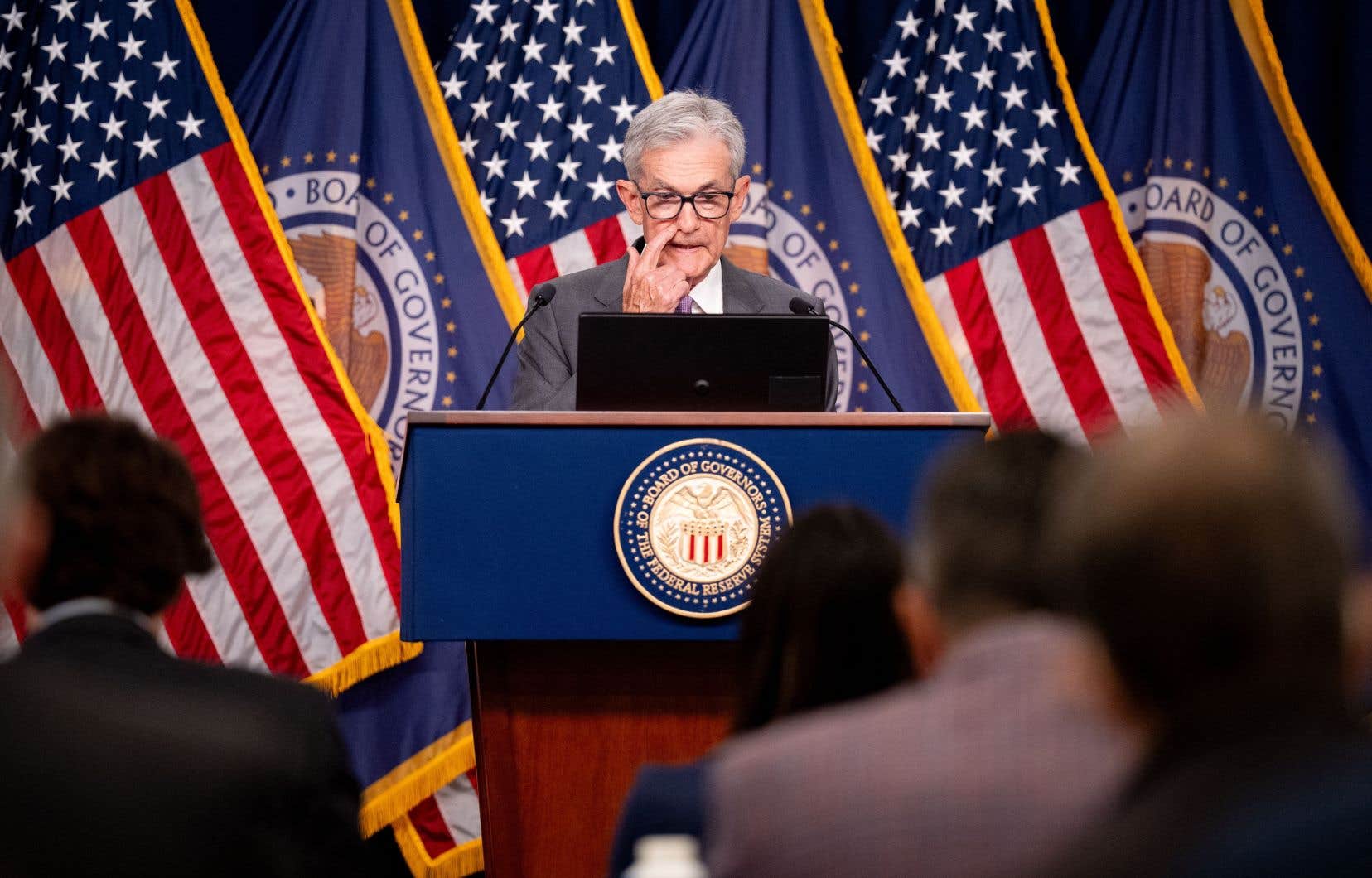It is no longer just the risks of inflation that concern the Fed: on Wednesday it said it was also “attentive” to the risks of seeing employment deteriorate too sharply because of the level of its rates, which it kept unchanged at the end of its meeting.
The American central bank (Fed) on Wednesday maintained its rates in the range of 5.25 to 5.50% where they have been for a year, a decision taken unanimously.
They had been raised to this level, the highest since 2001, in order to slow down economic activity to curb the high inflation which, in the United States as elsewhere in the world, had accompanied the post-Covid economic recovery.
The Federal Reserve meeting began Tuesday morning. The monetary institution’s chairman, Jerome Powell, will hold a press conference at 2:30 p.m. local time.
“Inflation has slowed over the past year but remains somewhat elevated,” the Fed said in its statement, welcoming the “additional progress” made toward the 2% annual price increase target, considered healthy for the economy.
Inflation has indeed resumed its downward trajectory, towards the 2% annual target, after a rebound in early 2024. It fell in June to 2.5% over one year, according to the PCE index, the Fed’s preferred measure.
Unemployment “remains low”
But the US central bank, above all, is now concerned about the risks weighing on employment as well, and not just on inflation.
The Fed’s monetary policy committee, the FOMC, “is attentive to the risks weighing on both aspects of its mandate,” namely stable prices and full employment, its officials emphasize in the press release.
The previous statement only mentioned inflation risks.
“The unemployment rate has increased, but remains low,” the FOMC stressed in its statement.
The July unemployment rate will be released on Friday, and is expected to be stable compared to June, at 4.1%, although with fewer jobs created.
While the Fed is wary of starting to cut rates too early, which could trigger a new surge in inflation, it is also careful not to do so too late, which could then increase unemployment.
The institution “wants to guard against a scenario where layoffs start to increase, leading to a more rapid weakening of the labor market,” according to Nancy Vanden Houten, an economist at Oxford Economics.
Jackson Hole
Inflation which now seems to be on the right trajectory, and an unemployment rate which risks rising too sharply: the door is open to a future rate cut.
Fed officials have not been explicit on this point, however. But analysts are largely expecting a first cut at the next meeting in mid-September.
The rate cut would be the first since March 2020, when the COVID-19 crisis abruptly shut down economic activity, prompting the Fed to reduce the cost of money to zero.
American businesses and consumers are longing to be able to borrow money more cheaply again. The Fed’s interest rates determine the rate at which banks lend.
Mr. Powell “will wait until the end of August in Jackson Hole,” the Wyoming mountain resort where central bankers hold their annual summit, “to give the explicit September taper signal,” according to Krishna Guha, an economist at Evercore, an investment advisory firm.
The September meeting will be all the more important because it will be the last before the US presidential election on November 5. Republican candidate for the White House Donald Trump had, last February, criticized the Fed for wanting to lower its rates to help the Democrats win.
